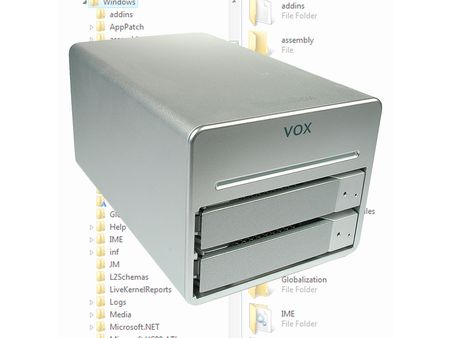NAS In Your Home: Vox's BlackBox
Introduction
Network storage devices have the advantage of not only providing data for several users, but also acting as a central storage repository. In a business setting, it’s easier to deploy and manage NAS versus trying to save the important data on every user’s desktop. And NAS boxes are doubly attractive since they generally suck down less power than a full-sized file server.
An increasing number of storage vendors have transcended the SMB market to offer NAS devices for home use, but since they are often only equipped with two hard drives, they offer less RAID functionality than expensive professional solutions. To account for the needs of SOHO customers, these devices support video and audio file sharing through built-in streaming servers. Unfortunately, you also often lose administrative functionality like email notifications in the event of a drive failure.
Lots Of Integration Means Headless, Efficient Operation
NAS devices for companies and home users have one thing in common: they provide storage space and other services without needing a full-fledged PC. This is made possible through an operating system that is integrated in the NAS device, usually based on a very lightweight Linux implementation. In turn, processing and memory requirements are minimal.
The hard drives are usually controlled with a built-in SATA controller. Granted, the controllers found in mainstream devices are usually less powerful than those used for professional enclosures, which you see when setting up a RAID array. This process often only takes a couple of minutes on high-end NAS boxes. However, it can take up to several hours with cheaper NAS devices, depending on how large the hard drives are. But this usually isn’t a problem, since the RAID mode is not going to change frequently.
The Vox BlackBox we’re testing in this article is one of the NAS devices that should be considered for home networks because of its technical specs.
Get Tom's Hardware's best news and in-depth reviews, straight to your inbox.

